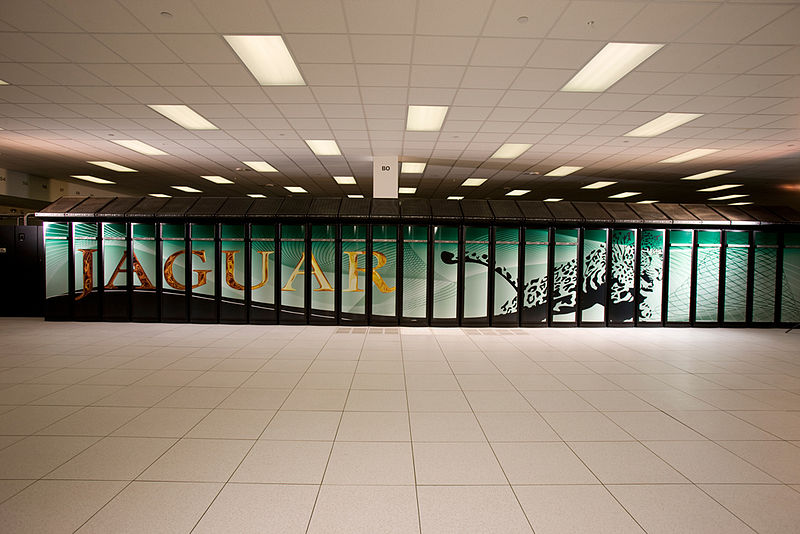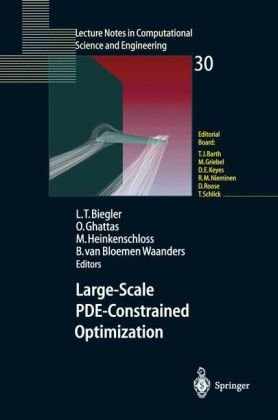
The Petascale future of computing is already here and we are now into the Exascale.
In my own home country of Australia, Business is utterly oblivious to what this means. They simply have no idea. The word clueless springs to mind.
There is a whole new computing revolution building rapidly in the wings. Business is destined to have this Rogue Wave simply break over and crush them. Government is throwing billions at a flagging car industry without realizing that the future of design and manufacture is software. It is sad to watch, but I am not my brother’s keeper. This is why I make my plans exclusive of whatever gigantic mess Australia creates for itself. It is time to avoid poor leadership and seek a more welcoming climate.
Now that I have renewed my contact with the mathematical sciences I have to say I am wildly excited. The single mathematical innovation of the last twenty years which most excites me is the wide application of control theory principles to computational design. This area goes by the rather dry name of PDE-Constrained Optimization:

Large Scale PDE-Constrained Optimization
Let us try to bring that to life a little…
The term PDE refers to the laws of Physics, Chemistry and Biology expressed in the form of Partial Differential Equations. There have been huge advances, especially in mathematical biology, in bringing those laws into mathematical form. You can think of this as the Laws of Nature freshly canned. Systems which do not presently exist can be modeled fairly well on a computer nowadays. That is a huge deal when it comes to the Lucrative Business of Design. You can now forward simulate a design and predict its behavior. This is Product Design by Computer, a trend now sweeping through the entire global manufacturing supply chain.
In addition to the huge performance boost of the multicore computing age, we now have the practical advance of optimization methods into Computational Design. The phrase Operations Research is the original name given to optimization methods and principles. It began in World War II with mathematicians and physicists assigned to figure out how to improve Allied operations against U-Boats.
That was the first Big Data exercise. Take a bunch of bombing and aiming statistics along with tactical information and work out a better way to strike the enemy. There is huge hype today about the “data” dimension of Big Data, but the truth is that Insight comes from Reductive Analysis. Compress the big data into a Smaller Model.
This fact is the origin of much public confusion over the Scientific Method. The whole reason we use it stems from the ability of Scientific Analysis to literally compress a vast array of seemingly unrelated phenomena into Systematic and Reliable Rules. It is not the data itself which presents the prize. It is the distillation of that to rules.
Sadly, they do not teach this idea in Business School. It is not complicated but many Business Leaders utterly fail to comprehend the power of it.
The PDE is the culmination of that research effort over centuries. For example, via the Navier-Stokes equation we can compute what the airflow over a complex shape looks like. The essential properties required to predict performance of an aircraft wing can be calculated. Experimental data remains valuable to check and refine methods but we can do a lot virtually. This greatly accelerates the design cycle.
Now imagine that you combine forward simulation with backward inference. Through numerical experiments you might figure out that some designs for a wing profile perform much better than others. How might you find the best for a given application?
The naive answer is the right answer.
Do massive trial and error. Use the computer to compute many designs. Through the methods of operations research, in the modern form of Optimal Control Theory, you can then home in on the better designs from among an infinite field of possibilities.
This is the essence of the new revolution in Computer Aided Art & Design.
I say Art also, since the newer methods permit such ideas as Shape Optimization and Computational Aesthetics. Our ability to describe shapes has evolved greatly since the 1940’s and 1950’s through applications of Differential Geometry, the math used by Einstein in his General Relativity. Now we can do dynamics with them!
Now we can turn this Promethean power towards Practical Art, Commerce and the Entertainment industry. It really is the very dawn of a new Golden Age of Mathematical Invention. We can capture the Natural world in equations and then use those as the raw material for a design process. The human possibilities are truly immense.
So far, these approaches have been limited to the so-called hard sciences. However, with the rapidly growing mass of social data the time of Practical Psycho-physics is fast approaching. We are learning to describe basic individual and social decision processes. At the head of this trend is Marketing, but it is wider than that.
People may have thought the Statistician and Economist Francis Ysidro Edgeworth to be an eccentric dreamer when he coined the word: Psycho-physics. However, I now believe that history shall prove otherwise. Edgeworth simply lacked the data. My own personal research into the drivers of Investor Sentiment has convinced me that mass-market behavior has predictable elements.
The Statistical Mechanics of Crowds is coming.
Contrast these advances with that of the financial community at large. Charged with the task of managing precious capital, Banks seem incompetent to do so.
I have personally spent about equal amounts of time in my career in both Science and Finance. I have had two 15 year sentences, served consecutively. Every field of human endeavor has its foibles, but Finance appears unique. All progress in finance seems cyclical, with the same mistakes repeated over and over and over again.
Finance is an area which takes a perverse pride to avoid knowing even something about anything of economic consequence. The general human desire to actually know something about the world is replaced by the charade of convincing people you know something. Sure, there is a lot of talk, but mostly it is a moveable feast of noisy commentary on what just happened.
It seems that the financial community suffers greatly from Scientific & Technological Illiteracy on a truly Grand Scale. Far worse, it is an arrogant ignorance which seems to manifest itself. The claim that not only do people not know anything practical about the real world, but that they are proud of it.
I am no longer surprised that the Global Financial Crisis happened. It is a direct consequence of a giant Cognitive Deficit in systems-level thinking.
The folks involved simply lack the mental preparation to know how to think about complex social systems and their consequences. This mental failing is present on both the upside and the downside. We saw failure on the downside with the GFC. Now let me predict a forthcoming failure on the upside.
The next Crisis will be a Titanic Failure of the Imagination:
Market participants simply do not realize how huge this next revolution will be.
It is for this reason that I chose the path of being both an Investor and Innovator. There is the old adage:
If you want to see the future it is best to make it.
The marriage of Optimal Control with Engineering and Artistic Design on Petascale Compute Clouds will be enormous.
Word Processing, Email and Status Updates are nice to have, but this will quite literally change the world.